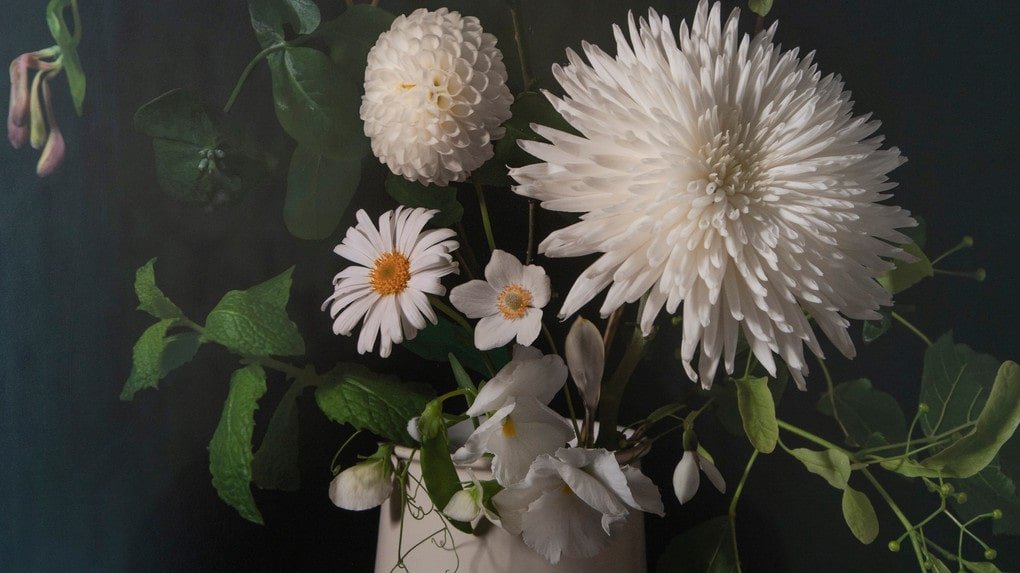Laura Stasiulyte
Interdisciplinary artist & photographer
Vilnius
Bouquet for H. Ch. Andersen
Montreux, Switzerland
This challenge cannot be overcome even by the contemporary floral industry, so the artist uses photography to collect all of the flowers into an impossible bouquet.
”For years I have been contemplating about a physical place as “Neverland”. For me such place is Switzerland, which on the e-bay platform, when looking for old postcards, falls under the symbolic category of the "rest of the world".
While reading Nabokov's book “The True Life of Sebastian Knight” I started thinking about Switzerland as a destination for the intellectuals of the 20th century searching for a creative refuge and for the convalescent seeking recovery. Directed by these thoughts I landed in Switzerland as an artist-in-residence of the 21st century.
Swedish theorist Karin Johannison writes in her book “Rooms of Melancholy” about how throughout modern history we have experienced a particular fatigue. There are striking similarities between the nervousness of the early 20th century and the stress of the early 21st century. According to the author, fatigue is a silent form of melancholy, linked to a spiritual tension - a tiredness from which it is impossible to recover.
My artistic research focuses on detailed descriptions of visits to Swiss sanatoriums, boarding houses and hotels, often found in literature, biographies, diaries and letters of artists and intellectuals of the early 20th century. During my residency in Switzerland, I worked with archives and walked the paths of those figures, which became part of my continuing work “in Letters”.
During this project I discovered H. Ch. Andersen's fairy tale "The Butterfly" which he wrote inspired by his stay in Montreaux. This fairy tale became my bouquet in photography. I collected and re-actualized postcards sent from various Swiss health and welfare institutions of the 20th century. The selected texts, some of them partially faded, others illegible, were transcribed onto the covers of the postcards. In this way I replaced Swiss landscapes with the mental landscapes of their senders. The blurred photographic landscapes become the background for the words written in the sanatoriums.” Laura Stasiulytė
Q&A
How does your upbringing influence your artwork?
I think that my “upbringing” in forms of training and education, has been and still is a major influence. Perhaps we should use "upbringing" in its plural form because there are parallel contexts and educators. I can trace my “educators” precisely from the age of three until now. I am continuously evolving and currently my students are my educators among many others.
What does your creative space feel like?
In my life private physical space has always been quite limited, restricted, it would never coincide with my creative space, which is much wider, so I’ve learned to push the walls. The capacity of people in a space is calculated by assuming that one person needs 1 sqm. I think that is enough. A table, a chair and a computer, well… maybe also a book. And then you move on to other spaces where you can find what you need for your work.
Do you verbalise when you’re creating non-verbal work?
At the very beginning I write down the creative urges that emerge, which can vanish in the routines of everyday life. And at the very end I write a text about the created work.
What tools do you use in creative processes?
I start the creative work with the help of a computer, Google and books. Later it depends on the work I am creating. If AI tried to create a work for me, it would probably be a "moving image" tool.
Future is...
I would rephrase the question this way: future is not. For some reason, when we talk about the future, we always imagine it as existing, but it might as well not exist. There is no one future. Although, lately I've been stuck in a loop of the future - I think of it as one where a small chat about today's weather will no longer work as a void-filling conversation. Warm talks about a sunny day seem to get "hotter" the further we go. As humans, we have embedded ourselves in the universe, and our extinction seems to be essential, but when you think of the dust swirling around, you realise your "secondary role”.




